#sickle hocked
Text

When I saw PERUVIAN PESOS I knew it was going to be a good one
-submission
what even is THAT
258 notes
·
View notes
Photo

Royale Sumernitz (Midsumernitzdream x Rroyalee) - 2015 Arabian Stallion
He’s got a mish-mosh pedigree but I like him. I see some Spanish, some Babson, some mainstream SE, and some Polish
#arabian#he is a tiny bit downhill and a tiny bit sickle hocked but not enough to cause problems imo#basing this on other photos
46 notes
·
View notes
Text
GSD breeders: I need that thylacine plantigrade look in my lines
23 notes
·
View notes
Photo
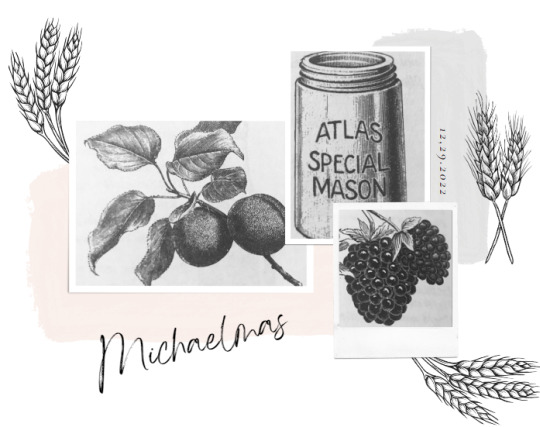
Excerpt from Ronald Hutton’s Station’s of the Sun:
During the early modern period, information upon harvesting increases, and most of it is summed up in three different sets of verses, spread across the span between 1570 and 1650. The earliest is Thomas Tusser’s famous rhyming treatise on farming, the first edition of which appeared in 1573. He described how a good employer gave gloves to his field-hands, how the latter cried for ‘largesse’, and how a “harvest lord” was appointed to lead and supervise the work. Tusser attached expecial importance to the food and drink given during the reaping and the entertainment at the end:
In harvest time, harvest folke,
servants and all,
should make all togither good
cheere in the hall:
And fill out the black boule of
bleith to their song
and let them be merie all harvest
time long.
Once ended thy harvest, let none
be begilde,
please such as did helpe thee, man,
woman and childe.
Thus dooing, with alway such
helpe as they can,
thou winnest the praise of the
labouring man.
He added that on the departure each “ploughman” should be presented with a “harvest home goose”.
The author of the late Elizabethan ballade “The Mery Life of the Countriman”, which has been much quoted earlier in this book, was as concerned to celebrate the process as Tusser was to give practical advice upon it:
When corne is ripe, with tabor and
pipe, their sickles they prepare;
and wagers they lay how muche in a
day they meane to cut downe there.
And he that is quickest, and cutteth
downe cleanest the corne,
a garlande trime they make for him,
and bravely they bringe hime home.
And when in the barne, without any
harme, they have laid up their corne,
In hart they singe high praises to him
that so increast their gaine.
And unto the parson, their pastor,
and teacher also,
With harts most blyth, they give their
tyth--their duties full well they knowe.
The standpoint of this writer, detached, external, and preoccupied with hierarchy and obligation was occupied in the early seventeenth century by a genuine poet, in a famous piece of literature. Robert Herrick’s “The Hock-cart, or Harvest home”, was pointedly dedicated to an earl and so concerned with the dues to a secular lord rather than to a clergyman. It depicts the cart carrying the last load from the fields, “dressed up with all the country art”, and followed by adults crowned with ears of corn and a whooping “rout of rural younglings”. A piper accompanies a harvest-home song. “Some bless the cart, some kisss the sheaves; some prank them up with oaken leaves”. the landowner has prepared a feast at his seat for them, of beef, mutton, veal, bacon, custard pies, boiled wheat and beer. The peopldrink first to his health, and then to “maids with wheaten hats” and to a succession of agricultural tools. The poem ends with a homily in favour of social deference and against drunkenness at the feast.
21 notes
·
View notes
Text
everyone be honest if you only saw that photo of Ed without knowing he's a standardbred would u think he was a standardbred. me personally I think he looks like a thick irish/clyde cross but I'm also biased because he's my boy and I think everything he does is beyond criticism
#hes got the butt fuck ugly standard bum lil bit sickle hocked upright as fuck shoulder but hes THICK#if he didnt have the brand and i didnt know him i would genuinely assume he was a clydie cross
4 notes
·
View notes
Text
A Letter to Josh Poteat
To be honest, I don’t know why I’m writing you this. It should have been the art I made for my ex-wife Mary in 1995, that she gave back to me in 2008 after I left her, that I later put in the trash. The art you told me recently got you working with shellac. It should be that I’m giving you, instead of this depressing thing about how I haven’t spoken with the oldest of my children in almost nine months, and the younger not since two Christmases ago.
I guess because when we talked about it before, I can’t remember exactly, maybe you asked in passing, “How’s the kids?” and I didn’t have an answer at the time. Maybe because I think you’ll understand me, like you always did. I haven’t been sleeping again lately, and this is when my mind wanders to the man I read about who died, trapped in a cave, but I don’t want to tell you about him. It’s too awful. If I find my mind lingering on him, I get seized by a whole body panic and I have to get up.
When I first got sober and couldn’t sleep, I went to war nightly with God. My mind was a scorched battlefield, blackened, shelled earth churned from trenches to craters. These days it resembles Zone Rogue in France, given back to nature and forbidden, saturated with ordnance, hundred year old arsenic lingering in craters. The toxic woods, wild and hoary, haunted now by deer and wild boar, trenches filled in with vines.
There is this vision I carry, not quite of myself- An old man alone in a mouldering trailer in the woods, bitter, childless and insane. No doubt, you have known such men. When I first got sober, he figured heavily in my mind- I considered this an alcoholic death even if I managed to stay clean.
It’s cold mornings like these- when I’m up early to feed the yowling cats, but again not quite early enough to manage to write, I wonder if perhaps he’s already arrived. I get on my worn out coat hanging by the leaky back door I haven’t fixed yet and head out into the frozen mud to free the chickens from their coop. The cracked tile floating underfoot like a shit-covered mosaic, and I remember to grab the screwdriver. I’m not using it to kill anyone, it’s to prize the eight little half-domes of ice from cups of their watering bucket. You know how this works. I always figured that, being a country-boy, you grew up with the same tales of horrors perpetrated against these birds, or else, like me, witnessed them firsthand.
Summer gets up and I finish my coffee with her as she tapes up my sprained hand. I try to get out the door before her kids wake. To facilitate quiet conversations that have a better chance of happening if I’m not around.
Pointing the truck toward Southside, it’s crossing the Powhite bridge where it really starts to bother me. Likely because it’s this point on the other side of the bridge, I’m only a mile away from their house. I ignore the river, bloated and steel grey, I’m looking for the nameless creek that empties into it there. I’m sure you know it, completely fabricated, it passes under Forest Hill and the train tracks. It’s cold outside the cab of my truck, but I’m not fooled by the last groan of winter. Studying the woods alongside the road, accessible as they aren’t yet burdened but the weight of all that green, I’m not sure what I'm looking for. Lost children perhaps. The sandy stretch where it emerges from snaking around behind the toll station is lined there with birches, flaking and slender, and shouldered with granite as it runs fast from a glut of late March thaw.
I’ve been going this way for a little over a month, filling a friend’s garage with sawdust from fabricating casework for bookshelves, paying particular attention to whatever happens to be going on with the creek as it seems to determine the flavor of grief for that week. Throughout the winter It’s been ever present, with me to the point I feel like there's something wrong, like a vitamin supplement I'm not taking.
Even though it’s been a string of bad days, the garage is warm enough, and I’ve been doing this work long enough I can rip down material on the table saw letting sadness wash over me without worry of losing a finger. I pay special attention to the music I listen to, so that I don’t have to take time and fall apart. At the end of the day I’ll sweep the dust-pile under the saw into a bucket for the chickens. There’s a ruined tire from the Harley I keep filled for them to bathe in. Which reminds me I haven’t told you about Greg the Bastard.
When Summer brought them home a year ago as chicks, they were unsexed, and as they grew, we inadvertently wound up with two roosters. Even though Greg is much bigger, he’s still number two and it’s made him skittish and unpredictable. Fierce Greg the Magnificent, Hen Raping Greg. He charges the dog as well as the kids now, and he’s even started to buck up on me. He stalks the yard like boys and men you and I have both known all our lives- insecure, large and dangerous. He doesn’t scare me, I’m more afraid the day will come when I will have to kill this animal.
In my twenties, Liz King, who you might know, got me a job after school let out with a woman I won’t name here. Another artist, she lived in an old farmhouse down Jeff Davis Highway and had been sexually assaulted by a man there. My job was to help powder and paint the place in order to put it on the market as she didn’t feel safe there anymore. We painted the whole inside. Flying the back roads in her pick-up to some Paint store way out Hull street, she told me how the man had befriended her dogs beforehand and how he threatened to kill her if she looked at him. I don’t remember asking her about it, just the image of her long legs in cut-off shorts clutching and shifting the small truck all over Southside. I made it most mornings, except after getting home late from a Rancid show in Hampton, I was too hungover and didn’t get to her place til well after noon. She was gone, but had worked the whole morning by herself. Later that day, when I called Liz to tell her how I fucked up, she fired me over the phone.
I bring all this up because she owned a lone rooster named Ajax, who hated me. Specializing in ambush tactics, I wasn’t safe anywhere in the yard from Ajax. The lady usually escorted me in from the gate, but heading out to the shed was dangerous. I can still feel him on the backs of my bare legs. Once, while rolling the living room ceiling and overwhelmed by the fumes of oil based primer, I stepped out on the front porch to dry heave a minute and catch my breath. Ajax heard and came stalking around the corner. Incapacitated, I cussed him, but head lowered, he came for me, creeping up the steps one terrible talon at time.
Later I made a six foot tall portrait of Ajax as best I could remember him. Crimson comb like a child’s depiction of fire out of control, waddles surrounding the beak blazing and reckless. The emerald of the sickle feathers a cyclone of green. Hock, shank and spur a series of harsh, black lines. Very Twombly-esque, it’s still hanging in my dad’s office. Based on this one hangover, I went on to make work for the next ten years depicting the Battle of Troy as a series of cock-fights. Achilles the Terrible dragging Man-killing Hector through the streets of Troy. That sort of thing. The drawing I made Mary came from that run.
I go home by way of the Huguenot bridge, because the Nickel bridge takes me directly in front of the house where my children live, which no matter how I’m doing, always threatens to cave my head in. If I go that way, I always think about stopping, and kneeling outside in the cold, perfect grass, with the thought if I wait long enough they might come out to see me.
I know it’s merely grief, the same garden variety of depression, that Chris Cornell said in an interview once was no less dangerous and could just as easily land a man on the end of a rope.
But that is not my way. I’ll drive home to Summer and her kids, help with dinner, watch TV and bed by ten thirty. Regardless. And if I find myself lying awake and the void comes, I won’t scream into it like the old days, I’ll sing to it. I don’t know why, maybe it’s a lament. Maybe I think my children will walk out of the darkness and into my arms.
18 notes
·
View notes
Text

Come, sons of summer, by whose toil
We are the lords of wine and oil;
By whose tough labours, and rough hands,
We rip up first, then reap our lands.
Crown'd with the ears of corn, now come,
And to the pipe sing Harvest Home.
Come forth, my lord, and see the cart
Dress'd up with all the country art.
See, here a malkin, there a sheet,
As spotless pure, as it is sweet;
The horses, mares, and frisking fillies,
(Clad, all, in linen, white as lilies.)
The harvest swains and wenches bound
For joy, to see the Hock-cart crown'd.
About the cart, hear, how the rout
Of rural younglings raise the shout;
Pressing before, some coming after,
Those with a shout, and these with laughter.
Some bless the cart; some kisses the sheaves;
Some prank them up with oaken leaves;
Some cross the fill-horse; some with great
Devotion, stroke the home-borne wheat;
While other rustics, less attent
To prayers than to merriment,
Run after with their breeches rent.
Well, on, brave boys, to your lord's hearth,
Glitt'ring with fire, where, for your mirth,
Ye shall see first the large and chief
Foundation of your feast, fat beef,
With upper stories, mutton, veal,
And bacon, (which makes full the meal)
With sev'ral dishes standing by,
As here a custard, there a pie,
And here all tempting frumenty.
And for to make the merry cheer,
If smirking wine be wanting here,
There's that which drowns all care, stout beer,
Which freely drink to your lord's health,
Then to the plough, (the common-wealth)
Next to your flails, your fanes, your fats;
Then to the maids with wheaten hats;
To the rough sickle and crook'd scythe,
Drink frolic boys, till all be blythe.
Feed and grow fat; and as ye eat,
Be mindful, that the lab'ring neat
(As you) may have their fill of meat
And know, besides, ye must revoke
The patient ox unto the yoke,
And all go back unto the plough
And harrow, (though they're hang'd up now.)
And, you must know, your lord's word's true,
Feed him ye must, whose food fills you.
And that this pleasure is like rain,
Not sent ye for to drown your pain,
But for to make it spring again.
by Robert Herrick
85 notes
·
View notes
Text

At the Solheimar Fall Open show Vigri earned his highest T1 scores of his life, winning the class and the T1/V1 combination prize. My goal with him has always been to train him at his speed and see if we can get better each year, but I had wondered, for a minute, if we had perhaps gone as high as we could go in T1. He has very complicated conformation, croup several inches higher than withers, back long and straight, cow-hocked and sickle-hocked... he has already accomplished more than many thought he could, myself included. At this show, however, we found a new gear and honestly I think it’s the competitive distance riding that’s giving him a new edge. I am so proud of him and excited to see what’s next! There are still more sport shows and distance rides to come in the 2019 Fall season and we are just having way too much fun ❤️ #vigrifrávallanesi #icelandichorse #horsesoficeland
17 notes
·
View notes
Photo
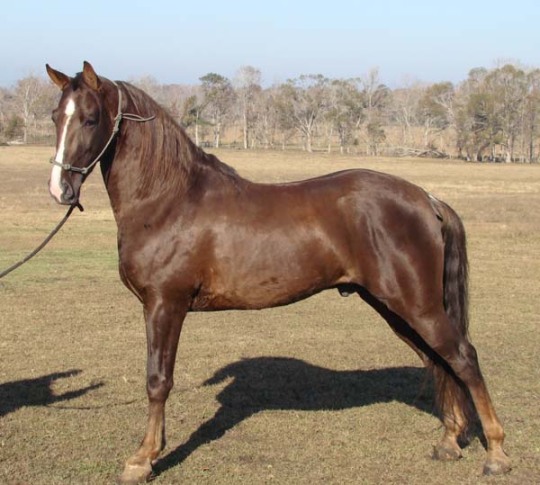
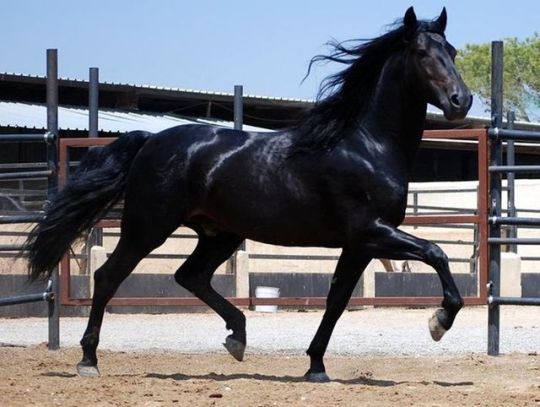







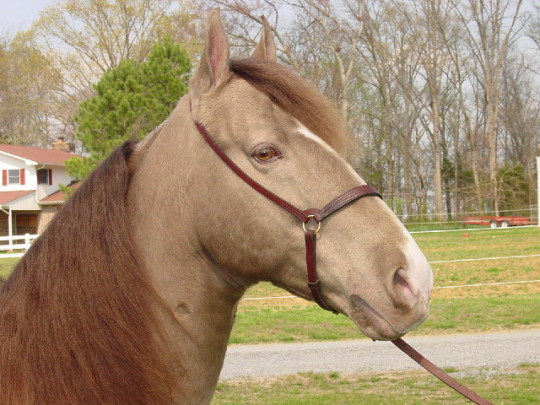
The Tennessee Walking Horse or Tennessee Walker is a breed of gaited horse known for its unique four-beat running-walk and flashy movement. It was originally developed in the southern United States for use on farms and plantations. It is a popular riding horse due to its calm disposition, smooth gaits and sure-footedness. The Tennessee Walking Horse is often seen in the show ring, but is also popular as a pleasure and trail riding horse using both English and Western equipment.
The breed was developed beginning in the late 18th century when Narragansett Pacers and Canadian Pacers from the eastern United States were crossed with gaited Spanish Mustangs from Texas. These horses were bred on the limestone pastures of Middle Tennessee, and became known as "Tennessee Pacers". Originally used as all-purpose horses on plantations and farms, they were used for riding, pulling and racing. They were known for their smooth gaits and sure-footedness on the rocky Tennessee terrain. Other breeds were later added, and in 1886 a foal named Black Allan was born. He is now considered the foundation sire of the breed. In 1935 the Tennessee Walking Horse Breeders' Association was formed, and it closed the studbook in 1947.
In 2000, the Tennessee Walking Horse was named the official state horse of the US state of Tennessee. It is the third most-common breed in Kentucky, behind the Thoroughbred and the American Quarter Horse. As of 2005, 450,000 horses have been registered over the life of the TWHBEA, with annual registrations of 13,000–15,000 new foals.
The modern Tennessee Walking Horse is described as "refined and elegant, yet solidly built". It is a tall horse with a long neck. The head is well-defined, with small, well-placed ears. The breed averages 14.3 to 17 hands high and 900 to 1,200 pounds. The shoulders and hip are long and sloping, with a short back and strong coupling.The hindquarters are of "moderate thickness and depth", well-muscled, and it is acceptable for the hind legs to be slightly over-angulated, cow-hocked or sickle-hocked. Common colors such as bay, black and chestnut are found, as are colors caused by dilution genes such as the dun, champagne, cream and silver dapple genes. Pinto patterns include overo, sabino and tobiano.
The Tennessee Walking Horse has a reputation for having a calm disposition and a naturally smooth riding gait. The Tennessee Walking Horse is best known for its running-walk. This is a four-beat gait with the same footfall pattern as a regular, or flat, walk, but significantly faster. While a horse performing a flat walk moves at 4 to 8 miles per hour, the running walk allows the same horse to travel at 10 to 20 miles per hour. In the running walk, the horse's rear feet overstep the prints of its front feet by 6 to 18 inches, with a longer overstep being more prized in the Tennessee Walking Horse breed. While performing the running walk, the horse nods its head in rhythm with its gait. Some members of the breed perform other variations of lateral ambling gaits, including the rack, stepping pace, fox trot and single-foot, which are allowable for pleasure riding but penalized in the show ring. A few Tennessee Walking Horses can trot, and have a long, reaching stride.
The two basic categories of Tennessee Walking Horse show competition are called "flat-shod" and "performance", distinguished by desired leg action. Flat-shod horses, wearing regular horseshoes, exhibit less exaggerated movement. Performance horses are shod with built-up pads or "stacks", along with other weighted action devices, creating the so-called "Big Lick" style. The United States Equestrian Federation and some breed organizations now prohibit the use of stacks and action devices at shows they sanction. In addition, the Tennessee Walking Horse is the breed most affected by the Horse Protection Act of 1970. It prohibits the practice of soring, abusive practices which were used to enhance the Big Lick movement prized in the show ring. Despite the law, some horses are still being abused. The controversy over continuing soring practices has led to a split within the breed community, criminal charges against a number of individuals, and the creation of several separate breed organizations.
117 notes
·
View notes
Note
For that horse breed ask: Kladruper, paint horse and quarter horse
Kaldruper: what is the most unique feature/habit that your horse has?Well, he's got the whole rabicano thing going on, which seems pretty unique. At least in warmbloods. He also LOVES pompoms. I have a navy beanie with one and he'll just rest his face in it for hours.Paint horse: favorite coat color(s)Hmm well since having fred I love anything with roan/ticking/rabincano. I reaaallyy want a red roan mustang one day. I worked with one for a while and she's soooo pretty 😍 Bay pintos are 👌👌Quarter horse: buying priorities?Solid confirmation, passes PPE, good personality. Freddie, although spooky, was okay with handling new situations, a floppy rider (me lol) and was super sweet the whole time. Confirmation is crucial. If your horse has a poor foundation they will break down early. Especially if you're not riding them properly or accommodating to their needs if they're weak in a certain area. Fred had no glaring faults like sickle hocks or a down hill build. He's not perfect, but he's functional.Thanks for the asks!
1 note
·
View note
Text

the fact this is standing for stud is horrifying
#the tip of his ass it as his eyes#sickle hocked#long back#why are his front legs so small#submission
83 notes
·
View notes
Text
It's kind of sad to see many of the Gazal al Shaqab descendants getting increasingly dysfunctional with each generation. While I personally would have used a different outcross stallion if I were in charge of the Polish state studs, Gazal Al Shaqab actually produced some nice offspring. Of Amba's maternal half siblings, my favorite is Aria Acclaim by Ekstern, but her half sister by Gazal Al Shaqab turned out decent as well. A bit bigger bodied that what Shahim Al Nakeeb produced. Marwan Al Shaqab is another stallion that just looking at his conformation I would turn away because he is very fine boned and a bit sickle hocked, but I can't fault him too much because a lot of his offspring are pretty athletic, especially in dressage. And certainly he is better than the abused diplodocus Magnum Psyche, who was his main competitor in the halter ring at the time. So while I wouldn't purposefully look for a horse with him in their pedigree, I also wouldn't turn one down just on that basis if they seemed nice in all other respects.
I just can't with Hariry Al Shaqab, though. The judges who are awarding him world championships need to stop. It's his extreme sickle hocks. The long, dippy back. The pointy butt. It's like they took every negative trait of his father and sought to exaggerate it rather than breed it out, and threw in some additional bad traits.

I'm not surprised, just disappointed. And I have a feeling that if a horse with the same confo but no Marwan in their pedigree entered the same ring, the judges wouldn't give it the time of day.

He also seemed lame at the Paris world show, stepping under with his left hind but rarely his right even at the walk.

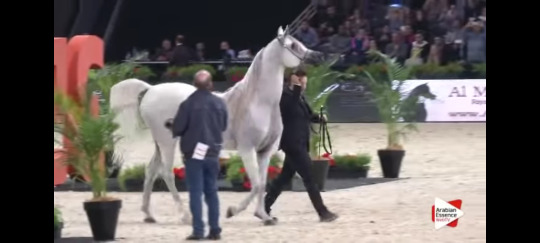


46 notes
·
View notes
Text
eso’s horses are uncanny valley ugly
0 notes
Text
Horse boy is also sickle-hocked and has dropped pasterns ghjsdf HE UGLY
0 notes
Note
1. those people sound like they suck omg why can't they just let things be instead of way overreacting to things that they take out of context!!! 2. omg can you repost the picture here? it sounds so cool! i've always wondered what TT's look like under all that coat, especially since they just seem like little shrimpy floofy cuties when they're wet!
It's here!https://facebook.com/story.php?story_fbid=1911814328845345&id=100000503885512Of course this one dog doesn't represent the entire breed, she is sickle hocked, but the educational value is still there
6 notes
·
View notes
Text
Stride Without Extremes
Please note: This article was lovingly contributed to be published on the German Shepherd blog by Linda J Shaw, MBA Author of “The Illustrated Standard for the German Shepherd Dog” on Saturday, Mar 12, 2016. This article and the image(s) remain under the copyright of Linda J Shaw and Aringsburg, and are not to be used without my written permission.
* Aringsburg and Shawlein jointly assert full copyright over the images in this post.
* "Seven photos should be self explanatory" - Linda J Shaw
The article goes here...
I am not especially enthusiastic over the increase in rear angulation that has commandeered the breed in North America over the last fifty years, and is now taking hold in Germany. The theory has always been that more acute angulation between the great levers of the hind leg; the femur, the tibia/fibula and the metatarsus; creates more drive and more powerful propulsion. I found, from my study of the gait of the wild gray wolf, that this is not the case. An increase in angulation does increase the length of the stride at the trot, but it also requires the dog to trot faster, and will tend to tax the dog’s endurance. Moderate angulation provides the best balance of speed and endurance.
Extreme angulation has also resulted in hindquarters that sag, producing an abnormally sloped topline and hocks that sickle and rotate to the midline, cow hocks, and sink to a plantigrade position. None of these problems should be rewarded in the show ring, but they are. I doubt that show judges or breeders will ever reject an increase in angulation in the rear. The side gait it produces is just too attractive.
However, it is possible to “have your cake” as it were, and produce beautiful side gait without the collapsing hindquarter and weak hocks. The dog pictured is a female from thirty years ago. In the black and white photos, she was about 18 months old (and out of coat). In the color photos, she was about 30 months. She obviously possessed the side gait so loved in the North American show ring, and appeared when posed to be as angulated and any judge would want.
Interestingly though, when set up in a normal support position, or “four square”, with the rear feet under the hip joints, or even with the rear feet set under the rear of the pelvis, she actually stands very high in the rear. Her hind legs are long, and not abnormally angulated. From the rear, her legs and hocks are straight and strong. She moved cleanly going away and was an enthusiastic jumper and fast at the gallop. At the trot, her back remained level and strong, not sloping, and she did not stand or run with her hocks on the ground.
No doubt few show people would want to see a dog standing with its croup higher than its withers. In actuality, she normally stood with her hind legs more or less in a show pose, and with a level back. She never sagged into a crouch or sit. I know because I owned her. She finished with three five point majors at specialty shows, including under Sam Lawrence, and in the working group defeated Canada’s top winning dog, all breeds. She had issues, but strength in the rear wasn’t one of them.
So if show dogs are your thing, there is no excuse for weak, sagging rears and soft, sickle hocks. They don’t have to be the price for the extended side gait required to win in the show ring.
Please Note: Copyright: These pictures are copyright protected by Aringsburg and Shawlein.




0 notes